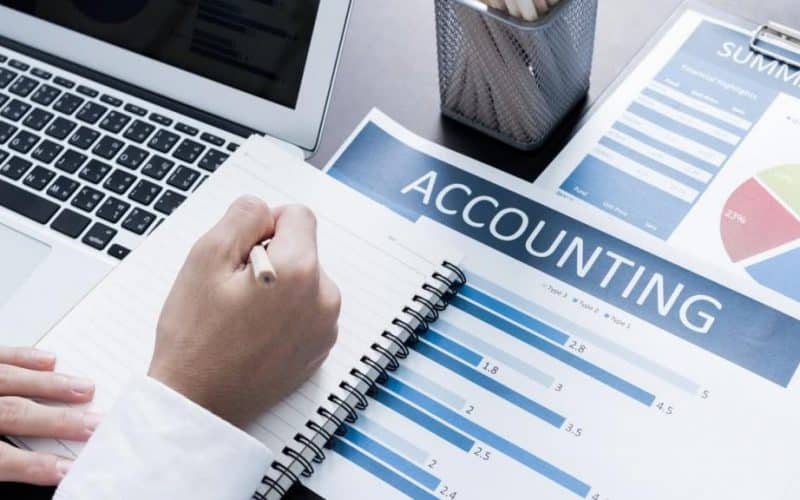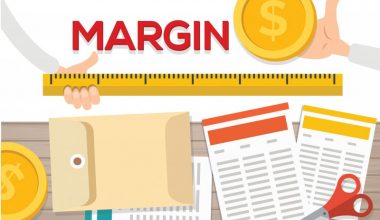With the rise in the number of accounting software across the globe, the need to familiarize ourselves with the steps or process of accounting is gradually phasing out. If you look closely, you’d find out that for most of these software, you hardly need any knowledge of accounting steps or process to get the information you need. With the snap of your fingers, they go over these steps—bypassing some of them— to produce more accurate results. It is, however, a different ball game entirely for bookkeepers and small business enterprises.
All types of bookkeepers should be familiar with the steps in the accounting process. For starters, it divides the complete process of a bookkeeper’s duties into simple parts—especially when they cannot afford the quicker alternative.
But while accounting software and technology applications may typically automate many of these processes, for small business accountants working on the books with limited technical support, learning and using the stages manually is critical.
What Is the Accounting Process?
The accounting process is a method for performing bookkeeping activities in a business. It gives a step-by-step method for documenting, analyzing, and reporting a company’s financial activity.
Throughout a full reporting season, the accounting process comes in handy in its entirety. As a result, being structured throughout the duration of the process is a critical component in maintaining overall efficiency.
Read Also: Accounting For Dummies: Best Easy Guide (+ free pdf)
Understanding the Accounting Process
Assume you’re a business owner who wants to know how well your company is performing. You’d probably want to know the answers to questions like:
Is there any money in the business?
Is there enough money in my account to pay my bills?
Does anyone owe me money?
What is the value of my company?
To answer these crucial questions, you’ll need to understand the hundreds, if not thousands, or even hundreds of thousands, of financial transactions that your company conducts each year.
Hence, the steps in the accounting process often begin with the individual recording of the firm’s transaction and conclude with a complete report of the company’s activities throughout a cycle period.
Over the years, accounting software have become a better alternative for many businesses to automate the accounting process. And, depending on the system in place at each organization, more or less technical automation may be used.
Goals of the Accounting Process
Accounting is a process that aims to make sense of the financial transactions that a company will encounter on a daily basis. This procedure deals with the never-ending stream of paperwork that typically accompanies every financial transaction, such as invoices received from suppliers for goods purchased by the company. The accounting process collects data from each financial transaction and records it in a database on a regular basis. This enables the data to be analyzed, categorized, summarized, and simplified so that business owners and/or managers can:
- Make business-related decisions
- Keep track of your finances and keep them under control.
- Ensure the company’s financial stability.
- Manage the company’s financial risks.
- Produce financial reports for shareholders and other business stakeholders.
- Provide the Taxation Office with information they need
The Significance of the Accounting Process
For both corporations and people, accounting is a critical and important procedure. It isn’t everyone’s idea of a good time, but the world as we know it would not exist without accounting. Accounting is responsible for the birth of capitalism.
When organizations fail to follow the correct accounting processes, they are more likely to fail. Furthermore, it is not uncommon for corporations to become engaged in legal proceedings when accounting systems fail.
Read Also: General Ledger Accounting: All You Need To Know( +Quick Tools)
The Accounting Process Steps
Accounting is a procedure that includes the following steps:
- an INPUT comprising a huge amount of uncollated financial data taken from financial source documents or other proof of financial transactions; and
- Financial reports (Profit and Loss Statement, Balance Sheet) which are an OUTPUT of simplified information that owners and managers use to analyze and operate the firm.
The steps in the process are as follows:
- Analyzing and categorizing the data contained in source documents that flow into the firm on a regular basis as a result of financial transactions.
- Use of journals to keep track of all financial transactions represented by source papers.
- Summarizing all financial transactions that reflect in Journals and transferring (in accounting language, “posting”) to the General Ledger on a monthly basis.
- Producing financial reports, from the collation of the pieces of information from the General Ledger.
Basically, financial data is summarized and simplified as each phase is completed.
The Financial Statements are a summary of the General Ledger; the General Ledger is a summary of the Journals; and the Journals are a summary of all received and recorded Source Documents.
Meanwhile, due to the nature of the activity, most organizations and enterprises follow a monthly cycle. This process is referred to as cyclical (The Accounting Cycle). On a monthly basis, the inputs (source documents) are recorded, analyzed, and summarized so that business owners and managers have an up-to-date financial report at the end of the month.
Here’s a breakdown of the steps in the accounting process.
1st Step: Make a List of all Transactions
Identifying transactions is the first stage in the accounting process. Throughout the accounting cycle, businesses will engage in several transactions. Each one must be correctly recorded in the company’s accounting records.
All forms of transactions require the use of recordkeeping. For the most part, a transaction occurs, resulting in the creation of a source document.
A transaction is a financial event that occurs in a business and has an impact on the accounting equation’s elements. Every debit must have a corresponding credit, according to the accounting equation.
Furthermore, to record sales transactions, many businesses will employ point-of-sale equipment linked to their accounting software. Aside from sales, there are a variety of expenses to consider.
2nd Step: Keep a Journal of your Transactions
While POS technology can assist in combining steps one and two, businesses must also keep track of their spending. When transactions officially go to the records, deciding between accrual and cash accounting will become vital.
Either way, keep in mind that accrual accounting requires that revenue match with expenses, thus both must be recorded at the time of sale.
When cash is received or paid, cash accounting requires transactions to be recorded. In order to manage a well-developed balance sheet, income statement, and cash flow statement, double-entry bookkeeping requires recording two entries for each transaction.
Meanwhile, both GAAP and the International Financial Reporting Standards (IFRS) require public corporations to use accrual accounting for their financial reporting.
Each transaction in double-entry accounting has a debit and a credit that are equal. Single-entry accounting is similar to keeping track of a checkbook. It generates a balance report without requiring repeated submissions.
A Journal is a tool to keep track of these transactions. A journal’s goal is to diarise transactions and then summarize them in order to make information easier to publish on the General Ledger.
Furthermore, similar transactions are placed in relevant columns in a journal that often comprises a number of columns. All payments for wages, for example, can be recorded into the “Wages” column in the Cash Payments Journal.
The following is an example of a journal:
- Purchase Journals
- Purchase, Returns and Allowances Journals
- Journals for Cash Payments
- General Journals
Meanwhile, in total, there are seven journals.
3rd Step: Posting
The general ledger is updated using journal entries.
All of the accounts are kept in a ledger, which could either be a book, a series of loose cards, or a file. The general ledger’s goal is to summarize the monthly postings from the Journal Books over the course of the year.
This helps a bookkeeper to keep track of account financial situations and statuses. The cash account, which shows how much money is accessible, is one of the most regularly referenced accounts in the general ledger.
The ledger will be organized in a specific sequence. For example, we may adopt the PALER order, which stands for Proprietorship, Assets, Liabilities, Expenses, and Revenue.
4th Step: Calculate Unadjusted Trial Balance
In simple terms, a trial balance is a list of all general ledger account balances.
A trial balance shows the company’s unadjusted account balances. After that, the unadjusted trial balance is taken to the fifth phase for testing and analysis.
Financial reports (Profit & Loss Statement, Balance Sheet) are created from the trial balance for presentation to management, owners, and other interested parties.
5th Step: Worksheet
The fifth phase in the process is to analyze a worksheet and find modifying entries. To guarantee that debits and credits are equal, a worksheet becomes priority.
It is important to make adjustments to check and rule out any inconsistencies especially when using accrual accounting.
Basically in accrual accounting, adjusting entries is paramount to ensure revenue and expense matches in addition to identifying any underlying problems.
6th Step: Adjusting Journal Entries
A bookkeeper makes corrections in the sixth stage. If and where necessary, adjustments take the place of journal entries.
7th Step: Financial Statements
In the seventh phase, the corporation/firm generates its financial statements after making all adjusting inputs. An income statement, a balance sheet, and a cash flow statement make up most companies’ financial statements.
8th Step: Bringing the Books to a Close
Finally, in the eighth phase, a corporation completes the accounting process by closing its books at the end of the day on the stated closing date. The closing statements provide a report that comes in handy when analyzing performance over time.
Final Thoughts
Accounting becomes easier for bookkeepers and busy entrepreneurs with the eight-step accounting cycle method. It basically assists in removing the guesswork from accounting procedures. It also aids in financial performance analysis consistency, precision, and efficiency.
Trust this post was able to help you get a hold of what you need and should do when it comes to accounting procedures. It’s totally okay if at this point you still need some sort of guide with these procedures.
Well, if that’s the case, then it’s not an issue. Just reach out on the comment section the contact section.
But either way, it would be nice to also hear your thoughts.
What Are the 7 Steps in the Accounting Process?
The seven accounting cycle steps are as follows:
- Identification and evaluation of business transactions.
- Submission of Transactions to Journals.
- Transferring entries from the Journal to the Ledger.
- Keeping track of adjusting entries.
- Preparing the trial balance with adjustments.
- Putting together financial statements.
- Trial Balance Post-Closing
What Are the 4 Accounting Process?
The first four steps of the accounting cycle are to:
- find and analyze transactions.
- record transactions in a journal.
- post journal information to a ledger.
- make an unadjusted trial balance.
What Are the Three 3 Basic Processes of Accounting?
Accounting consists of three key steps:
- identifying and evaluating business transactions.
- Recording the business transactions.
- Classifying and summarizing their impact.
- communicating the same to interested business information users.
What Are the 3 Elements of Accounting?
The accounting equation has three major components:
- Assets. The assets of a firm might range from cash to inventory.
- Liabilities. Liabilities are the second component of the accounting equation.
- Equity.
What Is the Main Process of Accounting?
The steps in the accounting cycle are finding transactions, writing them down in a journal, posting them, making an unadjusted trial balance, analyzing the worksheet, adjusting differences between journal entries, making a financial statement, and closing the books.






